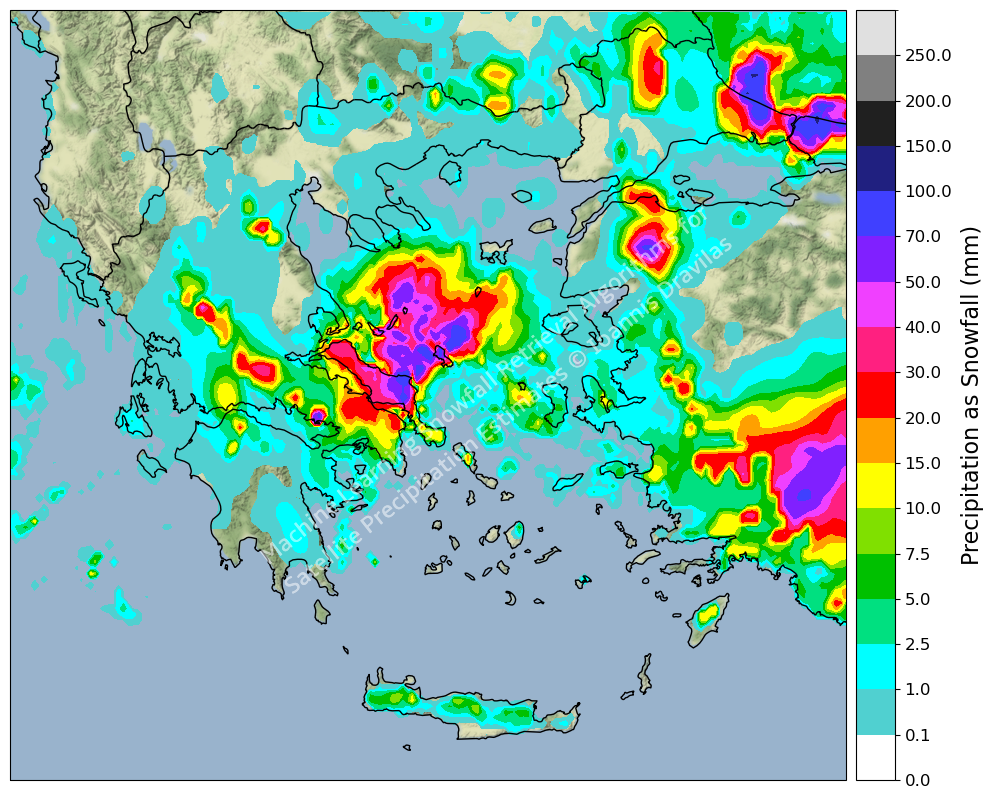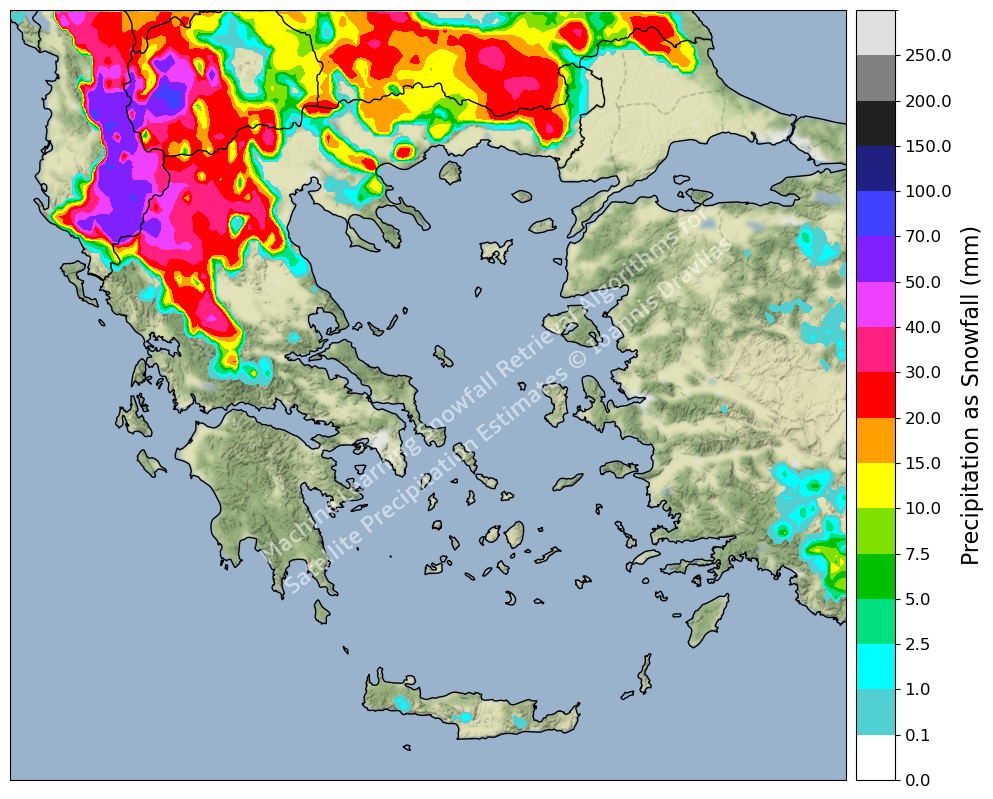Thesis: Machine Learning Snowfall Retrieval Algorithms for Satellite Precipitation Estimates
During my thesis, I explored the application of advanced Machine Learning techniques, with a particular focus on Deep Learning algorithms, to estimate the phase of satellite precipitation estimates. Both numerical and in-situ observational weather data were also utilized in the study.
This project was conducted in collaboration with researchers from the Institute for Environmental Research and Sustainable Development (IERSD)/METEO of the National Observatory of Athens (NOA). Furthermore, part of this research has been published in Environmental Sciences Proceedings and has been selected for presentation at the 16th International Conference on Meteorology, Climatology, and Atmospheric Physics on September 2023.
Exploring further:
Remote sensing of snowfall has been proved to be a significant challenge since the start of the satellite era. Several techniques have been applied to satellite data, in order to estimate the fraction of frozen precipitation that reaches the surface.
This thesis aims at investigating the efficacy of different Machine Learning (ML), and especially Deep Learning (DL) algorithms, in estimating the precipitation phase of NASA's Integrated Multi-satellitE Retrievals for the Global Precipitation Measurement (GPM-IMERG). To achieve that, a training phase with hourly high-resolution numerical model outputs and in-situ observational data is chosen for the period of late-2020 and 2021.
Results show that ML and DL models can estimate precipitation phase with relatively high accuracy, when compared to traditional methods, based on several case studies. The findings suggest that ML models offer a promising approach for advancing the nowcasting of snowfall and building a long-term archive dataset of IMERG-based snowfall, utilizing conventional near real-time data.
The developed model's capability to accurately determine precipitation phase on satellite data, holds tremendous potential for near-real-time snowfall monitoring, providing valuable insights for emergency responses and aid distribution in areas affected by severe weather. Furthermore, this model opens up new possibilities for creating a thorough and enduring snowfall dataset, significantly enhancing our understanding of hydrological processes, supporting various water resource management initiatives and contributing to a deeper understanding of climate change impacts.
Several cold waves that impacted Greece in 2022 served as real-world test cases, enabling us to explore the model's capability in identifying snowfall using GPM-IMERG precipitation estimates. In the figures presented below, one can see the 24-hour accumulated precipitation from IMERG that fell as snowfall on specific dates in Greece, as indicated by the advanced ML model we developed.

